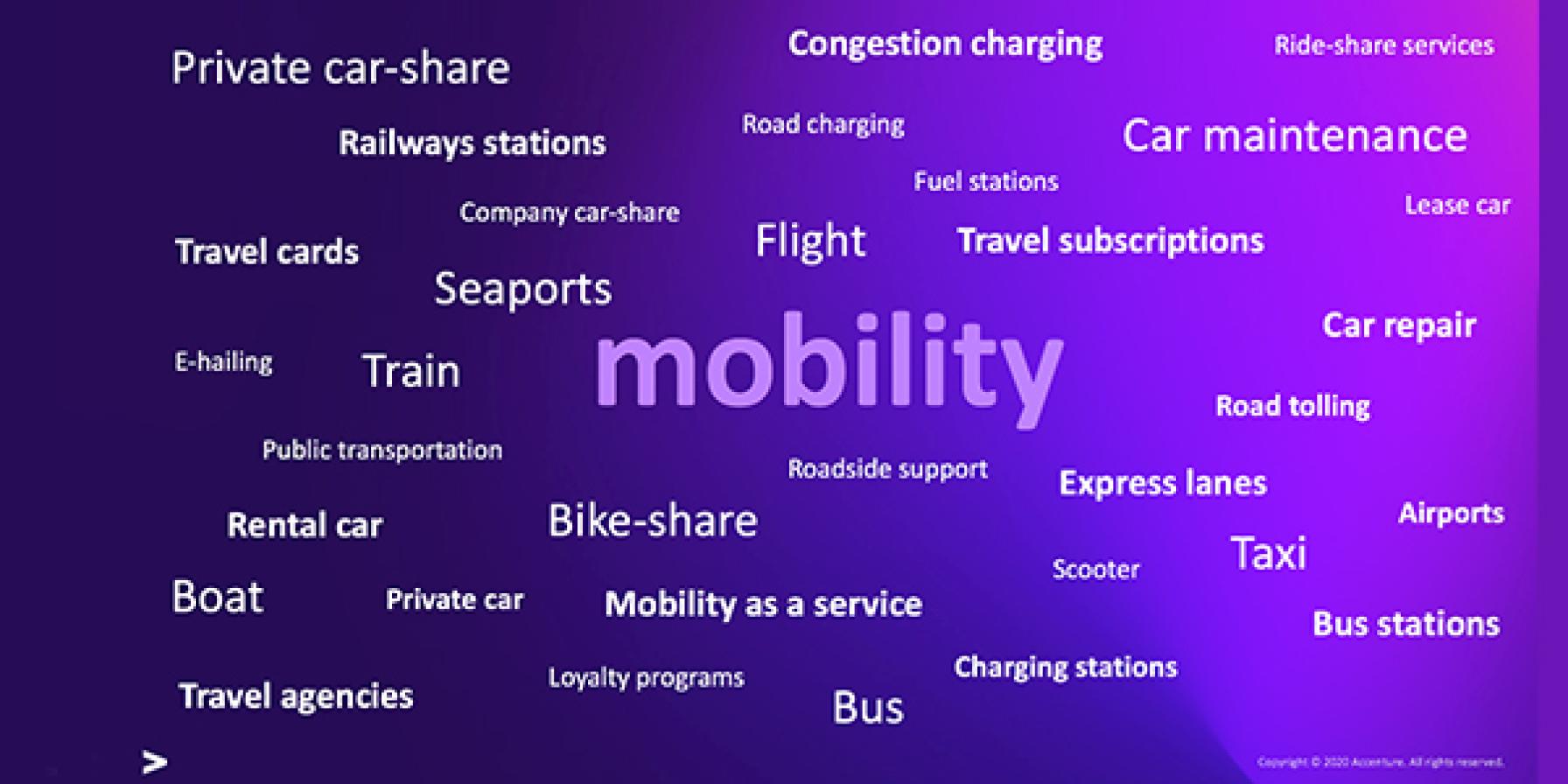- Home
- IBTTA Insights
- How Changing Mobility Will Shape Tolling in the Next Five Years
Stories
How Changing Mobility Will Shape Tolling in the Next Five Years

Guest blog
Sidney Edmonds, US Transit and Transportation Lead, Accenture
It’s a New Year. And even though we are still dealing with the effects of the pandemic, change is in the air. As we all start thinking about what 2021 has in store, the tolling industry should identify the areas that were affected by the pandemic and identify how they need to prepare for and adapt to these changes.
Customer expectations have changed
COVID-19 has accelerated change. From no-touch curbside services to the refocused commitment to public health, customers have had new experiences and will resist going back to the way things were done before. For example, we saw customers expect contactless service for safety reasons. The retail industry, which is still largely brick and mortar and reliant on in-person interactions to drive sales, quickly responded by ramping up their e-commerce sites and introducing new services such as curbside pick-up.
Travelling in a private vehicle is experiencing the same customer expectation for contactless payments across the travel journey. Many drivers want a seamless and integrated experience for the consumption of the different services while using their vehicles, such as contactless payments for tolls, parking, gas, service stations retail, drive-thru, etc. All this can be done using a single payment account together with a transponder, mobile app or connected vehicle.
The pandemic accelerated transformation
The COVID-19 outbreak resulted in organizations of all types having to adapt to new ways of doing business. Perhaps the biggest societal change is the shift to working from home. The tolling industry initially took a direct hit with a significant downturn in revenue, due to decreased usage of roads, bridges and tunnels. But as we look further ahead, there will be new opportunities for tolling operators.
In simple terms, fewer cars on the road mean there will be an acceleration of some infrastructure and other capital project improvements. A recent IBTTA blog post (“U.S. Interstate System Needs Repair and Refurbishment, even in a Pandemic”) mentioned that the need for repairs hasn’t changed. We will see an increase in capital projects, both as a spur to stimulate economic activity as well as taking advantage of minimizing customer disruption.
Over the long term, the underlying premise for roadway systems and transportation remains the same:
-
Population growth rates continue to soar worldwide;
-
Urban population numbers remain high; and
-
Expanding economic growth means people will want and have more flexibility to get out and go places, while consuming more goods and services will require transportation networks to deliver them.
The difference is that all the changes are going to happen faster. The pandemic has accelerated transformation, of which there is an example in another recent IBTTA blog post (“Pandemic Sped Up Bay Area AET Conversion from Five Years to One”). And the next five years will see things accelerate at a pace for which many in the tolling industry aren’t ready.
Broadened definition of Mobility
We define mobility as everything related to the transport of people and things. And we mean everything. While there are the familiar modes of planes, trains, and automobiles––there are also opportunities with novel concepts and emerging disruption services such as congestion charging, rideshare services, charging stations, and many more (see Figure 1).
Figure 1. What is Mobility?

Copyright © 2020 Accenture. All rights reserved.
With a broadened definition of mobility, we see four overlapping trends that will reshape the transportation industry in general and tolling specifically over the next five years.
1. Connectivity
When you think about new customer experiences and new business models (like we discussed for retail), connectivity is considered the prerequisite of everything. Accenture research shows that by 2025, all new vehicles will be connected vehicles. Forty percent of them will have embedded telematics which puts software at the center of the driver’s experience. By 2030 in the European Union, more than 40% of the driven kilometers will utilize intelligent driver assistance systems that are integrated and built on vehicle connectivity.
Connected vehicles will run apps like a mobile phone does today. This provides the opportunity to toll operators to dematerialize the transponder, to offer more sophisticated pricing, and to also provide a customized and contextualized experience for customers.
2. Autonomous driving
Self-driving cars were once a prop in Sci-Fi films while today there are pilots happening all around the world, although the timeline for when they will become commercially viable and widely available, remains uncertain. Original equipment manufacturers (OEMs) are still working to reach level 4/5 autonomy consistently. The technical progress is taking longer and investments are higher than expected. But consider the disruption coming down the road, when humans are not driving their cars, what will they be doing while in transit? There are new opportunities for bundled services and advertising that may seem far-fetched today, but they are coming.
Autonomous driving will bring benefits in road capacity optimization (when adopted massively), but its low cost and convenience (particularly in shared automated vehicles) will potentially create additional demand for private transportation, increasing congestion. Autonomous driving will also enable new economic and business models to manage road capacity through dynamic road usage charges and credits
3. Shared mobility
Shared mobility is already changing customer behavior and decisions today. In the future, you can expect ridesharing, vehicles on-demand, group rapid transit, micro-transit, etc. to accelerate, while the long-term impact is decreasing private vehicle ownership.
This will change transportation in many ways, but a leading candidate is the emerging trend of Mobility as a Service or a service-based model on how people use transportation. This may include:
Buying transportation like you do other subscription services and using it as you need it;
Selecting levels of service (economy, premium, luxury) that provide much greater customer flexibility and choice than how customers interact with transportation today; and
Cheaper and more efficient ways to meet customer demands.
4. Revenue/service opportunities
Driven in many ways by the noted disruptions, new opportunities to grow revenue, as well as positioning tolling operators for future revenue growth, will increase. Interoperability with retail and other service providers exists and is already happening today. For example, we see new trends in roadway right-of-way and real estate; online ordering and then driving to pick up the groceries; advertising; loyalty programs; and using analytics to drive customized advertising.
Going beyond the journey from point A to B
As integrated mobility becomes more of a day-to-day reality, toll operators will have opportunities to:
Develop new services and interactions with drivers to create positive and personalized customer experiences; and
Use analytics tools to understand and get to know drivers as customers. This information can be used to gain a better understanding of operational excellence, bundling services, and providing personalized service.
While some factors of COVID-19 remain uncertain, the reality is tolling agencies will bounce back over time and adapt to change. Customer expectations have changed––and Mobility as a Service will shape tolling in the next five years.
Copyright © 2021 Accenture. All rights reserved. Accenture and its logo are registered trademarks of Accenture. This document refers to marks owned by third parties. All such third-party marks are the property of their respective owners. No sponsorship, endorsement or approval of this content by the owners of such marks is intended, expressed or implied. This content is provided for general information purposes and is not intended to be used in place of consultation with our professional advisors.
Joining IBTTA connects you to a global community of transportation professionals, offering unmatched opportunities for networking, knowledge-sharing, and collaborative innovation in the tolling and transportation sector.
Follow IBTTA on social media for real-time updates on transportation trends and collaborative opportunities.





